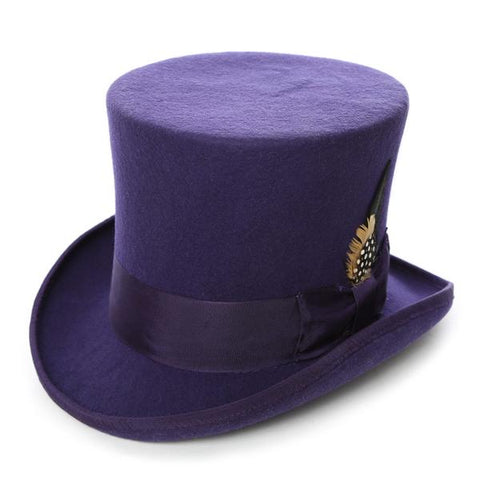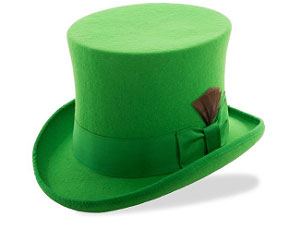Colorful Top Hats are among the favorites Mardi Gras items of 2019
Mardi Gras is a Christian occasion and well known social wonder that goes back a large number of years to agnostic spring and fruitfulness customs. Otherwise called Carnival or Carnaval, it's commended in numerous nations around the globe—for the most part those with huge Roman Catholic populaces—on the day preceding the religious period of Lent starts. Brazil, Venice and New Orleans play host to a portion of the occasion's most celebrated open merriments, drawing a large number of vacationers and revelers consistently.

What Is Mardi Gras?
Mardi Gras is a convention that goes back a huge number of years to agnostic festivals of spring and ripeness, including the rowdy Roman celebrations of Saturnalia and Lupercalia.
At the point when Christianity landed in Rome, religious pioneers chose to join these prevalent neighborhood conventions into the new confidence, a less demanding assignment than abrogating them inside and out. Thus, the abundance and lewdness of the Mardi Gras season turned into a prelude to Lent, the 40 days of fasting and repentance between Ash Wednesday and Easter Sunday.
Alongside Christianity, Mardi Gras spread from Rome to other European nations, including France, Germany, Spain and England.
What Does Mardi Gras Mean?
Mardi is the French word for Tuesday, and gras signifies "fat." In France, the day preceding Ash Wednesday came to be known as Mardi Gras, or "Fat Tuesday."
Customarily, in the days paving the way to Lent, merrymakers would gorge on all the rich, greasy nourishments—meat, eggs, drain, fat, cheddar—that stayed in their homes, fully expecting half a month of eating just fish and distinctive sorts of fasting.
The word jamboree, another basic name for the pre-Lenten merriments, likewise gets from this devouring convention: in Medieval Latin, carnelevarium intends to remove or expel meat, from the Latin carnem for meat.

New Orleans Mardi Gras
The principal American Mardi Gras occurred on March 3, 1699, when French pilgrims Pierre Le Moyne d'Iberville and Sieur de Bienville arrived close present-day New Orleans, Louisiana. They held a little festival and named their arrival spot Point du Mardi Gras.
In the decades that pursued, New Orleans and other French settlements started denoting the occasion with road parties, covered balls and sumptuous suppers. At the point when the Spanish took control of New Orleans, be that as it may, they canceled these rambunctious customs, and the bans stayed in power until the point when Louisiana turned into a U.S. state in 1812.
On Mardi Gras in 1827, a gathering of understudies wore vivid outfits and moved through the avenues of New Orleans, imitating the party they'd watched while visiting Paris. After ten years, the main recorded New Orleans Mardi Gras march occurred, a convention that proceeds right up 'til today.
In 1857, a mystery society of New Orleans representatives called the Mistick Krewe of Comus sorted out a light lit Mardi Gras parade with walking groups and moving buoys, setting the tone for future open festivals in the city.
From that point forward, krewes have remained an apparatus of the Carnival scene all through Louisiana. Other enduring traditions incorporate tossing dots and different knickknacks, wearing veils, finishing buoys and eating King Cake.
Did you know? Rex, one of the most seasoned Mardi Gras krewes, has been taking an interest in processions since 1872, and built up purple, gold and green as the famous Mardi Gras hues.
Louisiana is the main state in which Mardi Gras is a lawful occasion. Be that as it may, expound jubilee celebrations attract swarms different parts of the United States amid the Mardi Gras season too, including Alabama and Mississippi. Every district has its own occasions and customs.

Mardi Gras Around the World
Over the globe, pre-Lenten celebrations keep on occurring in numerous nations with huge Roman Catholic populaces.
Brazil's weeklong Carnival celebrations include a dynamic amalgam of European, African and local customs. In Canada, Quebec City has the monster Quebec Winter Carnival. In Italy, visitors run to Venice's Carnevale, which goes back to the thirteenth century and is well known for its disguise balls.
Known as Karneval, Fastnacht or Fasching, the German festival incorporates marches, ensemble balls and a custom that enables ladies to remove men's ties. For Denmark's Fastevlan, youngsters spruce up and assemble treat along these lines to Halloween—in spite of the fact that the parallel closures when they customarily flagellate their folks on Easter Sunday morning.
When is Mardi Gras?
Mardi Gras is generally celebrated on "Fat Tuesday," the Tuesday before Ash Wednesday and the beginning of Lent. In numerous zones, notwithstanding, Mardi Gras has advanced into seven days in length celebration.
Mardi Gras 2018 happens on Tuesday, February 13, however numerous spots, (for example, New Orleans) start their festivals the end of the prior week, beginning on February 9.
Mardi Gras 2019 falls on Tuesday, March 5.

Ferrecci has the best selection on items perfect fro your MArdi Gras celebrations in 2019. If you need any help finding items that you are looking for call our Style Guide Hotline at (213) 745-7266.


Leave a comment